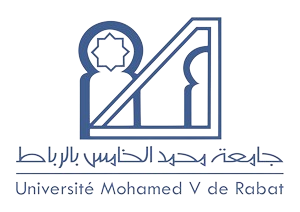
Mohammed V University of Rabat
Green Education Ranking
#961
About Mohammed V University of Rabat
Mohammed V University in Rabat is a dual-campus university in Morocco’s capital city. It ranks as one of the top 200 universities worldwide in a BRICS country or an emerging economy. The university was founded in 1957 by a royal decree from King Mohammed V, the sultan of Morocco. In 2015, Mohammed V was honoured by the Institute for World Jewish Studies for his protection of Morocco’s Jewish citizens during World War II. In 1993 Mohammed V University was divided into two independent universities: Mohammed V University at Agdal and Mohammed V University at Souissi. The two reunited in 2015, but remain separate campuses. The Agdal campus has three faculties: Letters and Human Sciences, Law, Economics and Social Sciences and Science. It also offers vocational courses and a diploma of technology. There are ten faculties at Souisi: the Faculty of Medicine and Pharmacy of Rabat, the Faculty of Dentistry Rabat, the National School of Computer Science and Systems Analysis, the Faculty of Educational Sciences, the Institute for the Study and Research for Arabization, the University Institute for Scientific Research, the Institute of African Studies, the Ecole Normale Superieure of Technical Education and two Faculties of Law, Economics and Social Sciences in separate locations. Over the years, Mohammed V University has produced several notable alumni. They include the Pulitzer-nominated novelist Laila Lalami, Moroccan Prime Minister Driss Jettou and the King of Morocco, Mohammad VI. Most tourists flock to Marrakech or Casablanca so Rabat is a less hectic city. As the administrative centre of the country, it’s easier for foreigners to visit without attracting the attention of hawkers. Rabat also offers plenty in the way of attractions, with cosmopolitan shopping and dining districts, an ancient castle and beautiful sea views.
About World Green University Ranking
World
Green University Ranking 2024 is a
scholarly acknowledgment of educational
institutions standing at the forefront of
Education for Sustainable Development (ESD) and
leading the Green Education Transformation
(Education 6.0).
World Green University Ranking classifies
universities based on the six pillars of the
Holistic Green Education Framework, including
leadership governance, curriculum, innovation,
facilities, human capital, and community
partnerships.
The methodology employed in our Green Education Ranking is designed relying on the six pillars of the Holistic Green Education Framework. Each pillar contributes to the institution’s overall score, with a carefully assigned weight reflecting its significance in fostering sustainability. The total weight of the six pillars collectively amounts to 100%, signifying a balanced evaluation across critical dimensions of Green Education. Within each pillar, various standards are carefully assessed, with weights ranging between 1 and 2, emphasizing the varying importance of each criterion. This nuanced approach ensures a holistic evaluation and offers an insightful measure of universities commitment to Green Education Transformation (Education 6.0).
| # | Six Pillars of Green Education Framework (6Gs). | Weight |
|---|---|---|
| 1 | Green Educational Leadership | 14% |
| 2 | Green Curriculum | 17% |
| 3 | Green Innovation and Research | 19% |
| 4 | Green Facilities | 15% |
| 5 | Green Human Capital | 19% |
| 6 | Green Communities | 16% |
| Total | 100% |

